Distances here are unbelievable. You can see for miles and miles if there aren't any obstructions and getting anywhere is beyond perception. It's been mind boggling how big/vast this place is coming from New Jersey where there are visual cues all around to a place like the Arctic tundra where there are no visual cues. I suppose I may still be in the "surreal" stage of being here if the distances still have not registered. To give you an idea of distances, the Linne Lake is 5 kilometers long and our hike back to the station is also 5 kilometers long. Go to the photo gallery for pictures of the lake and the station from the lake and try to conceive these distances. If you are from a developed state like New Jersey I think you will find it to be a challenge!
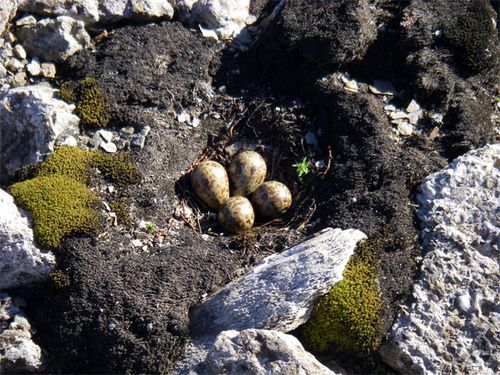 Eggs from an Arctic shorebird
Eggs from an Arctic shorebird
As a team we hiked to the Linne Glacier which was about 5.8 kilometers from the south end of the Linne Lake. All the treks here are challenging given the fact that there are no hiking trails like in the national parks of the United States, and the terrain is constantly changing from squishy to rocky, to hilly, to wet (stream crossing). Most people of the team hike with hiking boots and carry "Muck" boots or wear the Muck boots all day. The Muck boots are good for all types of terrain, although they don't offer the same kind of support as hiking boots. We've been fortunate that blisters thus far have been few, although a foot masseuse on staff would be appreciated greatly!
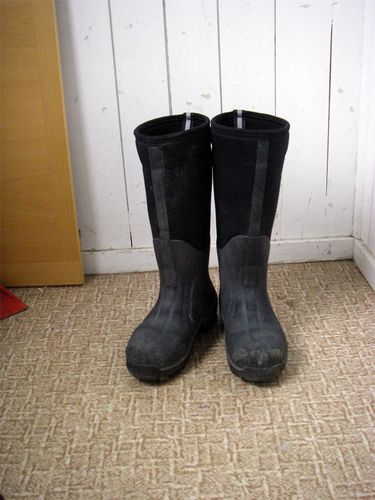 Muck boots are great for all types of terrains
Muck boots are great for all types of terrains
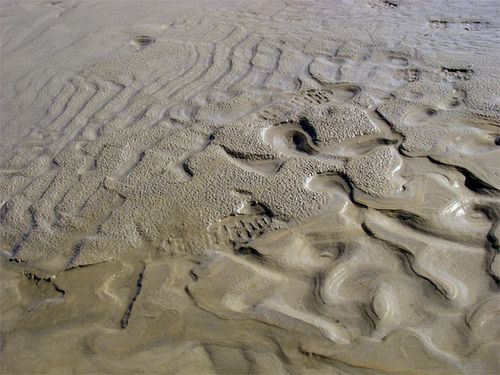 Erosion is persistant in glacial landscapes
Erosion is persistant in glacial landscapes
Since we are a team of 13 it is important to make sure that everyone stays together. We take breaks about every 5 kilometers of so to allow people to adjust their gear, change an article of clothing, or grab something to eat or drink. Layering clothing and bringing extra clothing is a must while in the field here because the weather constantly changes, and the physical activity of hiking with backpacks induces plenty of sweat. In my case in particular today I needed the extra clothes after falling in a stream. I stepped into an expected deep section and lost my footing. The extra clothes and warm sun had me back in business in no time. Our lunches are getting bigger as our physical activity increases. We stop for lunch around noontime, but have enough food to graze during the rest of the day. In the case of today we did not arrive back at the station and have dinner until 9PM. Happy, tired, hungry we enjoyed hot showers and soft shoes.
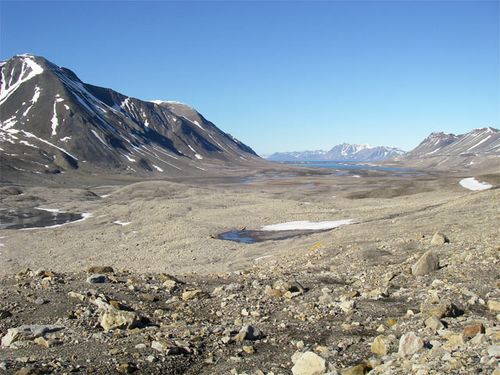 Looking north from the Linne Glacier a number of periglacial features are evident.
Looking north from the Linne Glacier a number of periglacial features are evident.
While at the glacier it was easy to visualize the movement of the Linne Glacier during the period of the Little Ice Age. It is believed that the Little Ice Age ended about 100 years ago here in Svalbard (the timing of the event varied globally), and the power of the glacier left behind huge moraines of rock from the surrounding formations in its wake. When we got to the Linne Glacier, we could see these moraines and attempt to reconstruct in our minds the movement of the ice. The ice that's present in the glacier started to form about 3000 to 4000 years ago and as glaciers grow they push ahead anything in front or on the sides of it. More information about the glaciation of this valley will come as the expedition continues. Stay tuned!
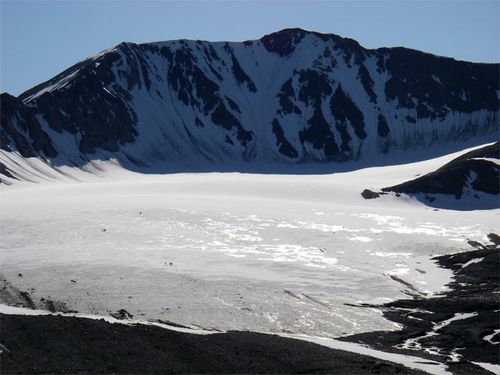 Look closely and notice the little specks. That's the Svalbard REU team measuring the ablation of the glacial ice.
Look closely and notice the little specks. That's the Svalbard REU team measuring the ablation of the glacial ice.
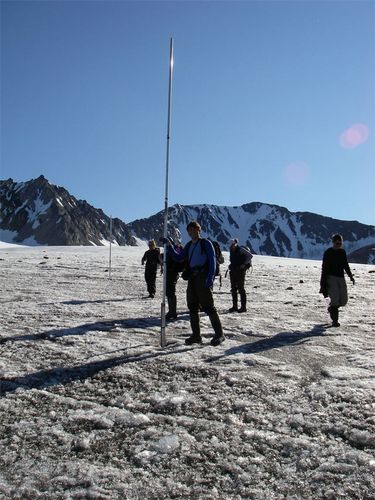 Leo standing next to an ablation stake on the Linne Glacier
Leo standing next to an ablation stake on the Linne Glacier
Task of the day: Get outside and enjoy a 5km hike (what is that in miles?) to get a feel for the distance.

